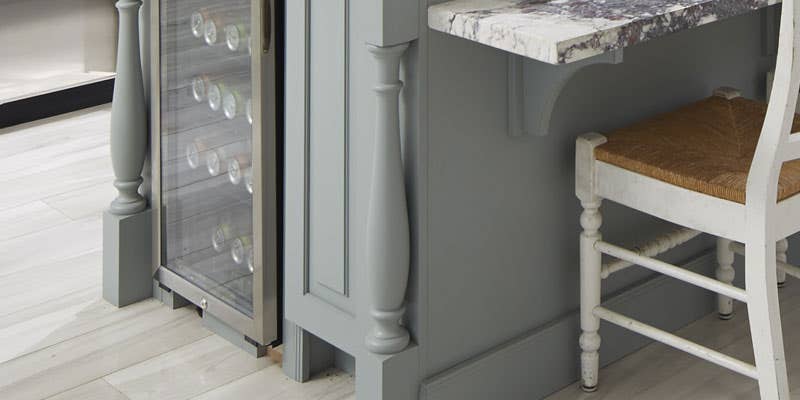Include Security and Appeal with Strong Legs For Kitchen Island Installments
Include Security and Appeal with Strong Legs For Kitchen Island Installments
Blog Article
An Overview to Picking the Perfect Legs For Cooking Area Island for Your Home
Picking the ideal legs for your cooking area island is a nuanced decision that impacts both the functionality and visual charm of this central room. Variables such as height, materials, and design play a crucial function in integrating your island with the total cooking area layout. In addition, understanding the significance of security and maintenance can considerably affect your option. As you take into consideration these components, it becomes noticeable that the best legs can transform not only the appearance of your cooking area but likewise its functionality for years to find. What particular attributes should you prioritize in this selection process?

Understanding Kitchen Island Legs
When selecting legs for a kitchen island, it's important to recognize their functional and aesthetic roles in the total style. The legs work as a critical support group, guaranteeing security and durability for the island, which commonly operates as an office, eating location, or gathering spot. The selection of product and building technique need to be durable sufficient to withstand daily use and possible wear.
In enhancement to their architectural duties, legs contribute considerably to the island's visual allure. They can improve the cooking area's design, whether with typical, contemporary, or diverse layouts. The height and percentage of the legs are additionally important considerations; they have to harmonize with the island's countertop elevation while making sure comfy seating for those making use of the room.
Additionally, the leg design can affect the total circulation of the cooking area. Open, airy leg designs can create a feeling of agility, while solid, substantial legs may convey a much more based and steady visual - Legs For Kitchen Island. Comprehending these useful and visual elements will certainly direct property owners in making notified choices that complement their kitchen's style and improve its usability
Popular Styles and Products
The option of legs for a cooking area island incorporates a selection of prominent styles and materials, each offering distinct features that can improve both functionality and aesthetics. Standard legs typically display luxuriant details and craftsmanship, improving timeless kitchen styles.

Height and Stability Factors To Consider

The legs of the kitchen area island need to supply adequate support, ensuring that the structure can hold up against everyday usage without changing or wobbling. Material option plays a significant function in security; metal legs, for instance, have a tendency to offer higher stamina compared to wood.
Matching Your Cooking Area Visual
Picking the best legs for your kitchen island exceeds functionality; it likewise plays a significant function in the total aesthetic of the area. When picking legs, think about the layout style of your kitchen. For a modern appearance, streamlined metal or minimal layouts can create a clean, contemporary ambiance. On the other hand, standard or rustic kitchen areas typically profit from important source wooden legs with complex describing or a troubled coating, enhancing heat and character.
Color is an additional essential element. Legs that match or contrast with your island's surface and surrounding cabinets can produce aesthetic harmony or striking centerpieces. As an example, combining dark timber legs with a light marble counter top can add depth and interest. In addition, take into consideration the coating of the legs; matte, glossy, or textured surfaces can substantially affect the overall feeling of the kitchen.
Installment and Upkeep Tips
Setting up kitchen island legs calls for mindful focus to detail to ensure both stability and aesthetic allure. Begin by selecting an ideal location for your island, ensuring it is degree and has sufficient room for motion. Utilize a stud finder to find wall surface studs if you are attaching the legs to a wall or utilizing braces for added support. Mark the placement of the legs accurately before drilling.
When safeguarding the legs, use top quality screws and, if needed, wood adhesive for added stamina. For steel legs, make certain that you are utilizing appropriate anchors and tools to stop damage to your floor covering. It is recommended to check for levelness after installment, making changes as needed to prevent wobbling.
Tidy the legs with an appropriate cleaner, staying clear of abrasive products that may damage the surface area. By adhering to these installation and maintenance suggestions, you can ensure that your cooking area island legs stay both functional and aesthetically attractive.
Final Thought
In verdict, selecting the ideal legs for a cooking area island requires careful factor to consider of height, stability, and visual compatibility. By choosing ideal products and styles that straighten with the overall cooking area design, functionality can be enhanced while preserving visual allure. Appropriate setup and continuous upkeep better add to the longevity reference and durability of the kitchen island. Inevitably, thoughtful leg choice plays an important role in boosting both the usefulness and design Full Report of the cooking area space.
When selecting legs for a kitchen area island, it's crucial to recognize their aesthetic and useful duties in the general layout. Open, airy leg designs can create a feeling of agility, while solid, substantial legs may share a more grounded and secure aesthetic. The legs of the cooking area island must give ample assistance, ensuring that the framework can withstand everyday use without shifting or wobbling.Mounting kitchen area island legs calls for cautious focus to detail to ensure both stability and visual appeal.In verdict, choosing the ideal legs for a kitchen island requires cautious factor to consider of elevation, security, and aesthetic compatibility.
Report this page